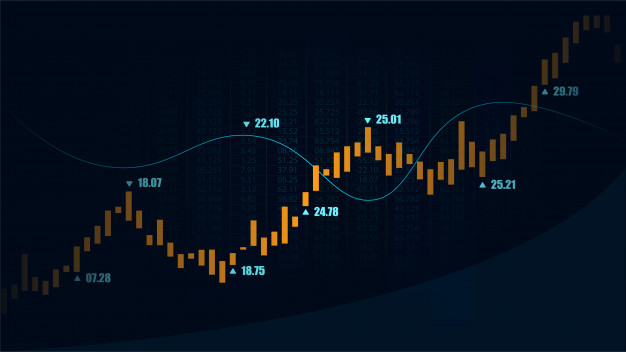(VIANEWS) – Valhi (VHI), First Trust Senior Floating Rate Income Fund II (FCT), Banco De Chile Banco De Chile ADS (BCH) are the highest payout ratio stocks on this list.
Here’s the data we’ve collected of stocks with a high payout ratio up until now. The payout ratio in itself isn’t a promise of a future good investment but it’s an indicator of whether dividends are being paid and how the company chooses to distribute them.
When researching a potential investment, the dividend payout ratio is a good statistic to know so here is a list of some companies with an above 30% payout ratio.
1. Valhi (VHI)
133.33% Payout Ratio
Valhi, Inc. engages in the chemicals, component products, and real estate management and development businesses in the Asia Pacific, Europe, North America, and internationally. The company's Chemicals segment produces and markets titanium dioxide pigments (TiO2), which are white inorganic pigments used in various applications by paint, plastics, decorative laminate, and paper manufacturers. It offers TiO2 under the KRONOS name through agents and distributors. The company's Component Products segment manufactures mechanical and electrical cabinet locks, and other locking mechanisms for use in ignition systems, mailboxes, file cabinets, desk drawers, tool storage cabinets, vending and cash containment machines, integrated inventory and access control secured narcotics boxes, medical cabinetry security, electronic circuit panels, storage compartments, and gas station security applications. It also provides stainless steel exhaust components, gauges, throttle controls, wake enhancement systems, trim tabs, and related hardware and accessories primarily for performance and ski/wakeboard boats. The company's Real Estate Management and Development segment offers utility services to industrial and municipal customers; owns real properties; and develops land holdings for commercial, industrial, and residential purposes. It also holds marketable securities and other investments. The company was incorporated in 1932 and is based in Dallas, Texas. Valhi, Inc. operates as a subsidiary of Contran Corporation.
Earnings Per Share
As for profitability, Valhi has a trailing twelve months EPS of $-0.42.
The company’s return on equity, which measures the profitability of a business relative to shareholder’s equity, for the twelve trailing months is 0.23%.
Yearly Top and Bottom Value
Valhi’s stock is valued at $14.36 at 14:23 EST, way under its 52-week high of $17.61 and way higher than its 52-week low of $10.80.
2. First Trust Senior Floating Rate Income Fund II (FCT)
94.82% Payout Ratio
First Trust Senior Floating Rate Income Fund II is a closed-ended fixed income mutual fund launched and managed by First Trust Advisors L.P. The fund invests in the fixed income markets of the United States. It seeks to invest in a portfolio of senior secured floating rate corporate loans. The fund benchmarks the performance of its portfolio against the S&P/LSTA Leveraged Loan Index. It was formerly known as First Trust/Four Corners Senior Floating Rate Income Fund II. First Trust Senior Floating Rate Income Fund II was formed on May 25, 2004 and is domiciled in the United States.
Earnings Per Share
As for profitability, First Trust Senior Floating Rate Income Fund II has a trailing twelve months EPS of $1.13.
PE Ratio
First Trust Senior Floating Rate Income Fund II has a trailing twelve months price to earnings ratio of 9.1. Meaning, the purchaser of the share is investing $9.1 for every dollar of annual earnings.
The company’s return on equity, which measures the profitability of a business relative to shareholder’s equity, for the twelve trailing months is 10.11%.
Volume
Today’s last reported volume for First Trust Senior Floating Rate Income Fund II is 37815 which is 62.29% below its average volume of 100304.
Yearly Top and Bottom Value
First Trust Senior Floating Rate Income Fund II’s stock is valued at $10.28 at 14:23 EST, below its 52-week high of $10.42 and above its 52-week low of $9.45.
3. Banco De Chile Banco De Chile ADS (BCH)
68.65% Payout Ratio
Banco de Chile, together with its subsidiaries, provides banking and financial products and services to customers in Chile. The company operates through four segments: Retail, Wholesale, Treasury, and Subsidiaries. It offers deposit products, such as checking accounts, current accounts, demand deposits and accounts, saving accounts, and time deposits; commercial, mortgage, consumer, working capital, syndicated, and installment loans; and credit and debit cards. The company also provides leasing, factoring, and foreign trade services; international and treasury banking services; and financial advisory services for mergers and acquisitions, debt restructuring assistance, and payments and collections services. In addition, it offers liquidity management services, debt instruments, and derivative contracts and leases, as well as financial transactions business and currency trading services; and securities brokerage, mutual funds management, wholesale customers, investment banking and management, insurance brokerage, and securitization services. It serves individuals, small and medium-sized companies, corporate clients, and large companies. As of December 31, 2021, the company operated through a network of 334 branches and 1,766 automatic teller machines. Banco de Chile was founded in 1893 and is headquartered in Santiago, Chile.
Earnings Per Share
As for profitability, Banco De Chile Banco De Chile ADS has a trailing twelve months EPS of $2.51.
PE Ratio
Banco De Chile Banco De Chile ADS has a trailing twelve months price to earnings ratio of 8.75. Meaning, the purchaser of the share is investing $8.75 for every dollar of annual earnings.
The company’s return on equity, which measures the profitability of a business relative to shareholder’s equity, for the twelve trailing months is 25.82%.
Yearly Top and Bottom Value
Banco De Chile Banco De Chile ADS’s stock is valued at $21.96 at 14:23 EST, under its 52-week high of $24.10 and way above its 52-week low of $19.20.
Revenue Growth
Year-on-year quarterly revenue growth grew by 11.6%, now sitting on 2.71T for the twelve trailing months.
Growth Estimates Quarters
The company’s growth estimates for the ongoing quarter and the next is a negative 10.8% and a negative 31.7%, respectively.
4. Hawaiian Electric Industries (HE)
59.67% Payout Ratio
Hawaiian Electric Industries, Inc., together with its subsidiaries, engages in the electric utility, banking, and renewable/sustainable infrastructure investment businesses in the state of Hawaii. It operates in three segments: Electric Utility, Bank, and Other. The Electric Utility segment engages in the production, purchase, transmission, distribution, and sale of electricity in the islands of Oahu, Hawaii, Maui, Lanai, and Molokai. Its renewable energy sources and potential sources include wind, solar, photovoltaic, geothermal, wave, hydroelectric, municipal waste, and other biofuels. This segment serves suburban communities, resorts, the United States armed forces installations, and agricultural operations. The Bank segment operates a community bank that offers banking and other financial services to consumers and businesses, including savings and checking accounts; and loans comprising residential and commercial real estate, residential mortgage, construction and development, multifamily residential and commercial real estate, consumer, and commercial loans. This segment operates 42 branches, including 29 branches in Oahu, 6 branches in Maui, 4 branches in Hawaii, 2 branches in Kauai, and 1 branch in Molokai. The Other segment invests in non-regulated renewable energy and sustainable infrastructure in the State of Hawaii. Hawaiian Electric Industries Inc. was incorporated in 1891 and is headquartered in Honolulu, Hawaii.
Earnings Per Share
As for profitability, Hawaiian Electric Industries has a trailing twelve months EPS of $1.81.
PE Ratio
Hawaiian Electric Industries has a trailing twelve months price to earnings ratio of 5.98. Meaning, the purchaser of the share is investing $5.98 for every dollar of annual earnings.
The company’s return on equity, which measures the profitability of a business relative to shareholder’s equity, for the twelve trailing months is 8.63%.
Yearly Top and Bottom Value
Hawaiian Electric Industries’s stock is valued at $10.83 at 14:23 EST, way under its 52-week high of $40.16 and way higher than its 52-week low of $8.74.
Growth Estimates Quarters
The company’s growth estimates for the current quarter and the next is 8% and 8%, respectively.
1. 1 (1)
1% Payout Ratio
1
Earnings Per Share
As for profitability, 1 has a trailing twelve months EPS of $1.
PE Ratio
1 has a trailing twelve months price to earnings ratio of 1. Meaning, the purchaser of the share is investing $1 for every dollar of annual earnings.
The company’s return on equity, which measures the profitability of a business relative to shareholder’s equity, for the twelve trailing months is 1%.
Stock Price Classification
According to the stochastic oscillator, a useful indicator of overbought and oversold conditions, 1’s stock is considered to be overbought (>=80).
Sales Growth
1’s sales growth is 1% for the current quarter and 1% for the next.
Volume
Today’s last reported volume for 1 is 1 which is 1% above its average volume of 1.
Growth Estimates Quarters
The company’s growth estimates for the current quarter and the next is 1% and 1%, respectively.










